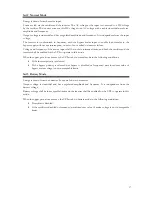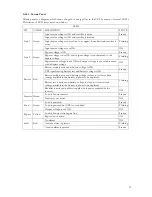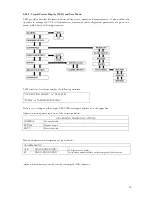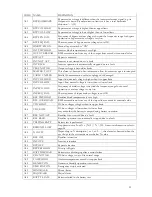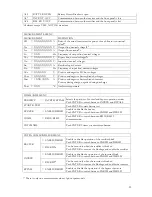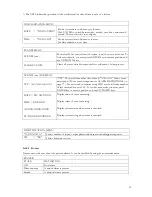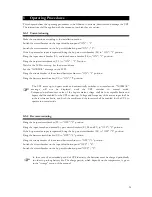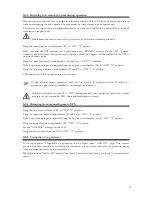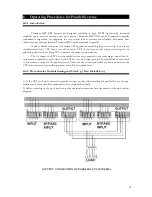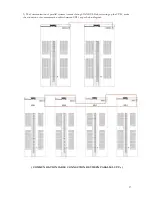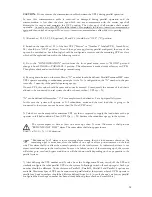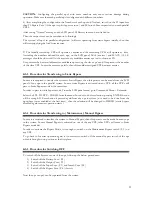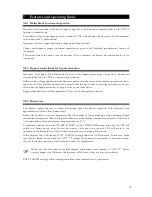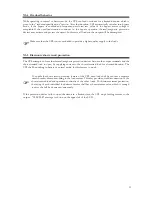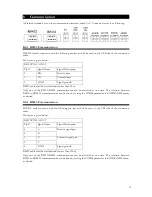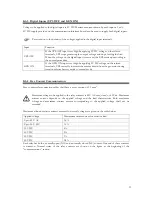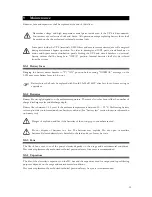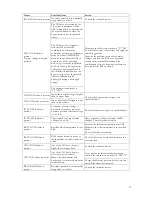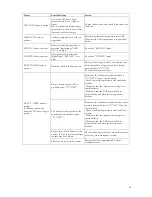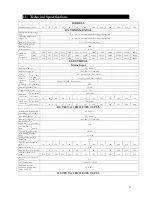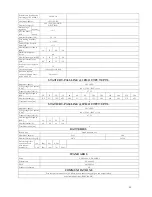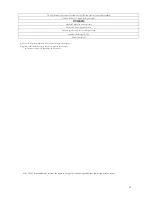
28
CAUTION:
Do not remove the communication cables between the UPS’s during parallel operation.
In case this communication cable is removed or damaged during parallel operation and the
communication is lost then the slave ups which can not communicate with the master ups shall
disenergize its output and maintain the OFF position. The other ups’s shall continue their normal
operation. At such a case, this UPS should be turned off completely in order to insert its communication
again and then switched on again. Do not try to insert its communication cable while it is operating.
3) All switches ( F1, F2, F3, F4(optional), F5 and F6 ) should be in “OFF” (“0”) position.
4) Switch on the input Fuse ( F1 ) of the first UPS ( “Master” or “Number 1” labeled UPS) , Inrush Fuse (
F6 ) should be in “OFF” position. ( Note: if the ups’s are not factory parallel configured, then any of the
ups can be switched on but followingly should be configured as master and the remaining UPS’s as slave
which will be explained in detail in the following section )
5) Go to the “CONFIGURATION” section from the front panel menu, enter to “MODE” part and
change it from SINGLE to PARALLEL-1 position. This adjustment is made already at factory set UPS’s.
Then please check and control this during commissioning.
6) By using down button on the same Menu, “N” number should be defined. Parallel Premium DSP series
UPS’s operate according to redundancy principle. At the N+1 configurations, the “N” number in this part
is usually - 1 quantity of the parallel operating ups qty.
On each UPS, this value should be same and correctly entered. Consequently the amount of load that is
allowed to be connected to total system should not be more than ( UPS qty – N ).
“N” can be defined different than “1”. For example it can be defined as 2 at a 4pcs parallel system.
In this case the system will operate as 2+2 redundancy mode and the total load that is going to be
connected to the system can not be more than ( 2x One UPS Power ).
N Value here can be accepted as minimum UPS qty that is required to supply the load where each ups
operates in full load condition. Then ( UPS Qty ) – ( N ) becomes the redundant ups qty in the system.
The system expect to have at least one more ups than N value. Otherwise it shall provide
“REDUNDANCY LOST” alarm. The same alarm shall also appear in case
Load % x (N+1) / N > 100 situation.
“Redundancy Lost” alarm is just a warning alarm stating that the load amount shared on the
remaining ups’s is more now, after the failure of one ups or after a power increase on the load
side. This alarm shall not affect the normal operation of the total system. It indicates that there is not
anymore redundant ups in the total system. In case of a failure on one of the remaining ups’s, the system
will either go to overload, bypass condition or will shut down totally depending on the ups quantity in the
parallel system.
7) After defining the UPS number and N value from the Configuration Menu, switch off the UPS and
similarly configure the other parallel UPS’s in the system. Followingly switch off each ups again. Each ups
number should be different. Under this menu; Parallel-1, Parallel-2, Parallel-3 and Parallel-4 options are
available. Maximum 4pcs of UPS can be connected in parallel and at the systems where 4 UPS’s operate in
parallel, each ups’s numbers should be different, defined from 1to 4. (note: if the ups’s are factory parallel
configured then each ups’s number has been already defined, please check and control this )




